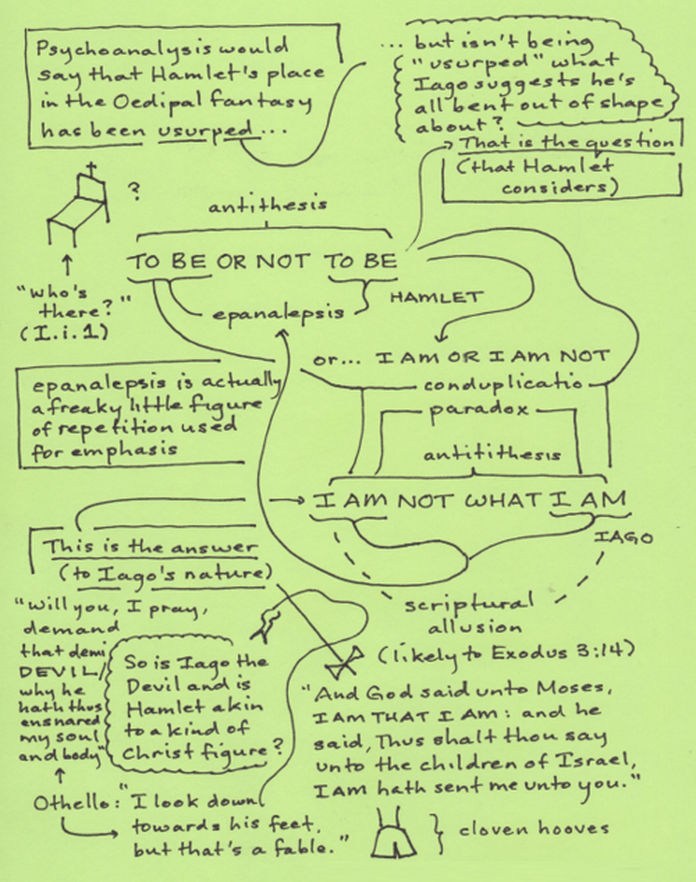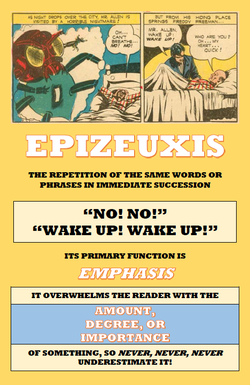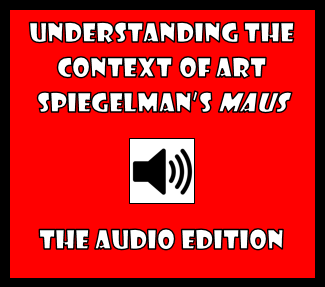An Exercise in Visible Thinking Lunacy My goal with the Visible Thinking Project is to generate 365 scribbles, doodles, or other visual brainstorms at the rate of one per day for the next 365 days. Sometimes, I hope to post more than one a day and other times I'll be resting. My goal in undertaking this is to help those who find the site's resources useful and to thank users for a great first year here at Comics in Education. So, for the first visible thinking post of the series, I thought I'd go old school... I won't comment too much on these doodles. This one helped me to clarify some of the connections between Hamlet's "To be or not to be" and Iago's "I am not what I am." The weird connection begins with them sharing the curious literary device of epanalepsis, and then things just get weirder from there. Anyway, I hope you enjoy these exercises in visible thinking throughout the next year. Better yet, I hope you'll submit some of your own that we can feature on the site. If you have something you'd like to share, get in touch with us through our contact page. We'd be happy to share it! See you in a year! If you enjoyed this post, you might also enjoy:
1 Comment
4/7/2015 01:52:03 pm
I have always appreciated this approach to understanding literature. One of my old old profs would make us draw poems. It is an effective approach to analysis.
Reply
Your comment will be posted after it is approved.
Leave a Reply. |
Glen DowneyDr. Glen Downey is an award-winning children's author, educator, and academic from Oakville, Ontario. He works as a children's writer for Rubicon Publishing, a reviewer for PW Comics World, an editor for the Sequart Organization, and serves as the Chair of English and Drama at The York School in Toronto. If you've found this site useful and would like to donate to Comics in Education, we'd really appreciate the support!
Archives
February 2019
|





 RSS Feed
RSS Feed
